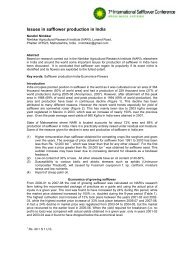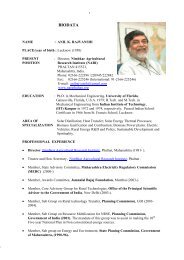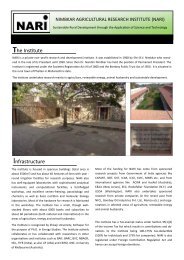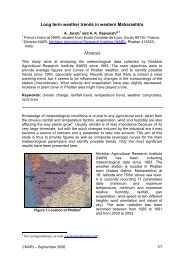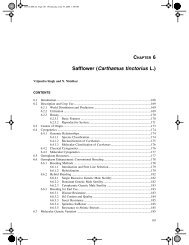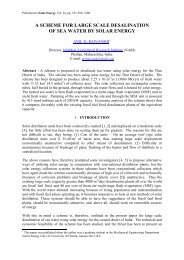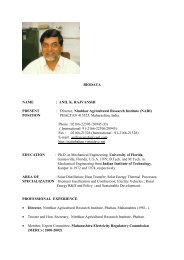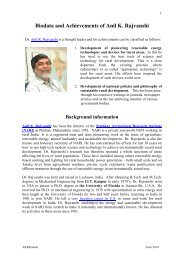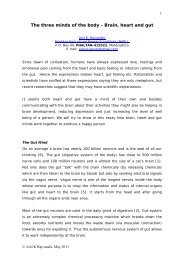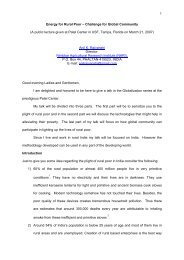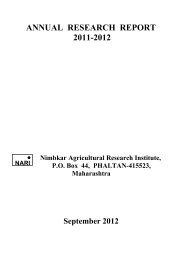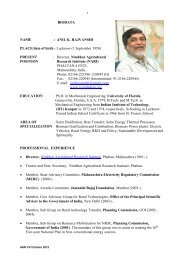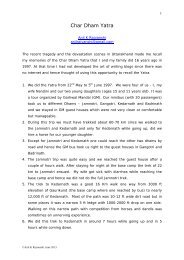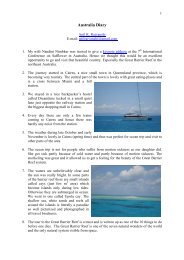You also want an ePaper? Increase the reach of your titles
YUMPU automatically turns print PDFs into web optimized ePapers that Google loves.
Package <strong>of</strong> practices :<br />
1) Climate : ‘Madhura’ hybrid can be<br />
grown under diverse climatic<br />
conditions. The mean maximum and<br />
mean minimum temperatures under<br />
which it can be grown range from 30<br />
to 36 0 C and 15 to 20 0 C, respectively.<br />
The range <strong>of</strong> average temperatures for<br />
its satisfactory growth is 27 to 30 0 C.<br />
2) Soil and preparatory tillage<br />
operations : Well-drained heavy to<br />
medium soil is suitable for this crop.<br />
The soil should be ploughed followed<br />
by two to three harrowings. Before<br />
last harrowing, 10-15 cartloads <strong>of</strong><br />
well-decomposed manure per hectare<br />
should be mixed in the soil.<br />
3) Season : Kharif and summer are the<br />
ideal seasons for growing “Madhura”.<br />
It can also be grown during winter<br />
(rabi) season with 20% reduction in<br />
stalk yield, but with more grain yield.<br />
4) Sowing method :<br />
a) For syrup : The sowing should<br />
preferably be done on ridges and<br />
furrows under irrigated condition,<br />
but under rainfed condition<br />
normal drilling can be followed.<br />
The distance should be 45 to 60<br />
cm between two rows and 15 to 20<br />
cm between two plants within a<br />
row. Average plant population<br />
should be 1.0 to 1.5 lakh/ha.<br />
b) For fodder : For fodder purpose<br />
the inter and intra row spacings<br />
should be 45 cm and 10 to 15 cm<br />
respectively. Average plant<br />
population should be 2.0 to 2.5<br />
lakh/ha.<br />
5) Seed rate : For syrup and grain : 7.5<br />
kg/ha and for fodder : 15 kg/ha.<br />
6) Sowing time :<br />
Kharif (Monsoon) : First fortnight <strong>of</strong><br />
June<br />
Rabi (Winter) : From last week<br />
<strong>of</strong> September to<br />
second week <strong>of</strong><br />
October.<br />
Summer : From January to<br />
February end.<br />
7) Fertilizers : A fertilizer dose <strong>of</strong><br />
80:40:40 kg, N:P:K/ha at the time <strong>of</strong><br />
sowing is optimum under rainfed<br />
condition. A fertilizer dose <strong>of</strong><br />
100:50:50 kg N:P:K/ha is<br />
recommended for sowing under<br />
irrigated conditions. Half <strong>of</strong> the total<br />
nitrogen and full dose <strong>of</strong> phosphorus<br />
and potassium should be given at the<br />
time <strong>of</strong> sowing, while the remaining<br />
half <strong>of</strong> nitrogen should be given in two<br />
equal doses either at 30-35 and 65-70<br />
days after sowing or at one time, 35<br />
days after sowing followed by<br />
irrigation.<br />
8) Intercultivation : Thinning should be<br />
done at 20-30 days after sowing. In<br />
case <strong>of</strong> excessive tillering caused due<br />
to shootfly damage, tillers should be<br />
removed for getting uniform stalk size.<br />
Weeding two to three times at 3, 5 and<br />
7 weeks after sowing not only helps to<br />
check weed growth but also conserve<br />
soil moisture by providing top soil<br />
mulch.<br />
9) Irrigation management : Under<br />
irrigated conditions in medium to deep<br />
soils it is desirable to give four<br />
irrigations - one each at panicle<br />
initiation, boot, bloom and grain<br />
filling stages. In case <strong>of</strong> limited<br />
availability <strong>of</strong> irrigation water, it can<br />
be restricted even to one irrigation at<br />
panicle initiation (35 DAS) or boot<br />
stage (60 DAS). In summer season, 8-<br />
10 irrigations are required.<br />
©<strong>NARI</strong> 2006 2



